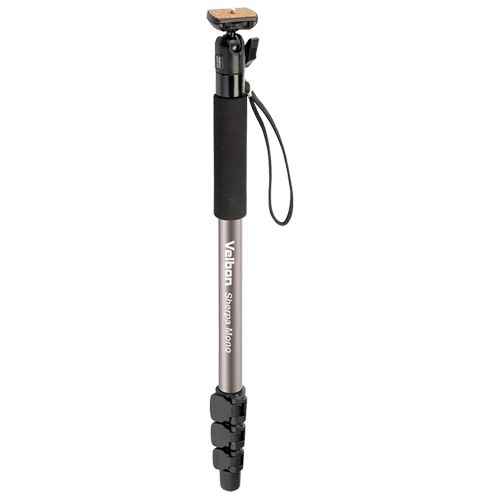Why you need a Monopod
If you’ve ever shot with a long telephoto lens, you’ll have noticed that when you’re holding the camera to your eye and supporting the lens with your left hand, it doesn’t take long before your arm tires. Each time you raise the lens, the ache and shaking start slightly more speedily.
Support and freedom.
Now – you could use a tripod to take the weight, and a good quality one will give superb support – but the downside is that you lose a bit of freedom of movement and the spontaneity of hand-held photography. A monopod, however, gives you support and freedom.
At its simplest, a monopod is like a single tripod leg with a screw at the end to attach it to your camera or lens via the tripod mount. The monopod’s height can be adjusted by unlocking the locks, and extending or shortening the length as required. You can also tip it backwards, forwards or to either side to get the angle you want for the shot, without having to carry all the weight of the camera and lens.
It’s also possible to attach a tripod head to a monopod for added convenience, and to enable shooting in portrait orientation. Some monopods like the Velbon Sherpa and Manfrotto Off Road Stunt Pole come supplied with a tripod head. If you want to add one to a ‘leg only’ monopod, consider a small ball-head to keep size and weight to a minimum.
With very long, heavy lenses, the best approach is to attach the tripod to a lens collar – this ensures that the heaviest part of your kit is supported and the camera lens mount won’t be subjected to undue stress. A further bonus is that the lens can usually be twisted within the collar and the camera switched smoothly between landscape and portrait format, so you don’t need a head.
Don't be restricted by a tripod.
When to use a monopod
We recommend using a monopod with long, heavy telephoto lenses because as well as taking the weight off your arm, it will enable you to take sharper images with less blur from camera shake. It’s also usually easier to keep distant subjects in the frame and ensure that the active AF point is in the right location.
Monopods are useful for a wide range of photographic situations, but they are especially helpful when shooting sport and wildlife. They can also be handy for extended shoots when you don’t want to be restricted by a tripod or one isn’t allowed. And if you use a remote control, or your camera’s self-timer, a monopod can come in very handy for helping get above head-height shots over crowds.
As they are slim and light, it’s often possible to slip a monopod into your bag and carry it with you ready in case you need it. If your shoot runs into the evening, for example, a monopod will help you capture sharp low-light shots without bumping up the ISO setting and introducing image noise.
- By Matthew Ward
- 21 Feb 2017



































































